Chicken Wings are a Super Bowl tradition. I love making them because it allows me to experiment since I usually make two or three different kinds to play around with different flavors. This year, have finally decided to publish a few of my favorite recipes and create this complete guide to chicken wings. My goal is to present some of my favorite flavors and make it easy for you to adapt to your preferred cooking method. Wings are adaptable to many forms of cooking and can easily be made in the air fryer, broiler, or oven.
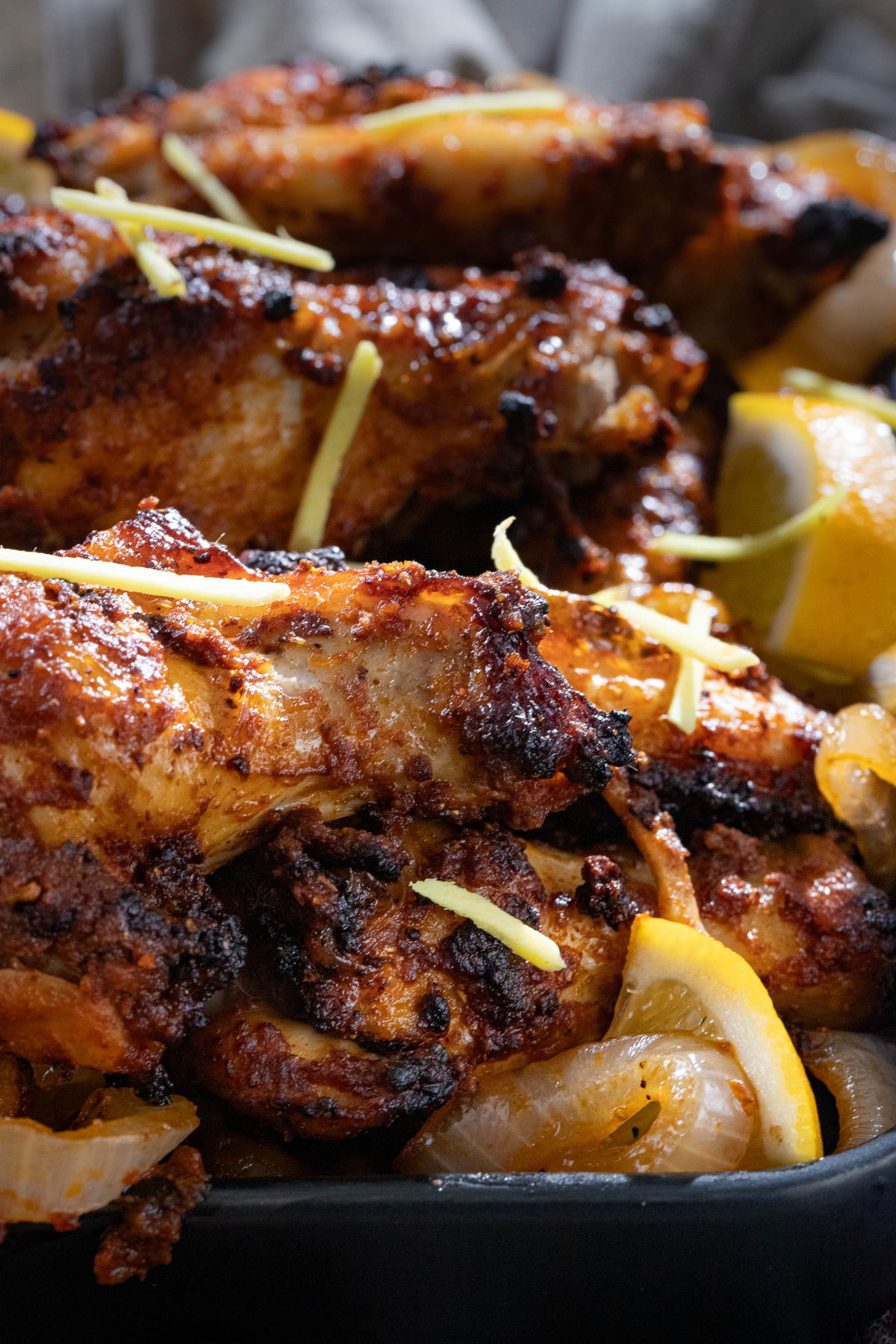
What are Chicken Wings?
I don’t doubt you have seen these little chicken pieces before and probably eaten them many times. But these “wings” are much smaller than a chicken’s wing. And you may have noticed they come in two distinct shapes. One resembles a miniature drumstick, and the other has two bones running parallel and attached at either end.
These “party wings” are, in fact, chicken wings. But they are chicken wings that have been split into two bite-sized pieces called “drummettes” and “flats,” or “wingettes.”

So, what are “Boneless” Chicken wings?
So-called “boneless” chicken wings are not chicken wings at all. Boneless chicken wings are made from breast meat. The breast meat is removed from the bone and cut into a size and shape that resembles chicken wings.
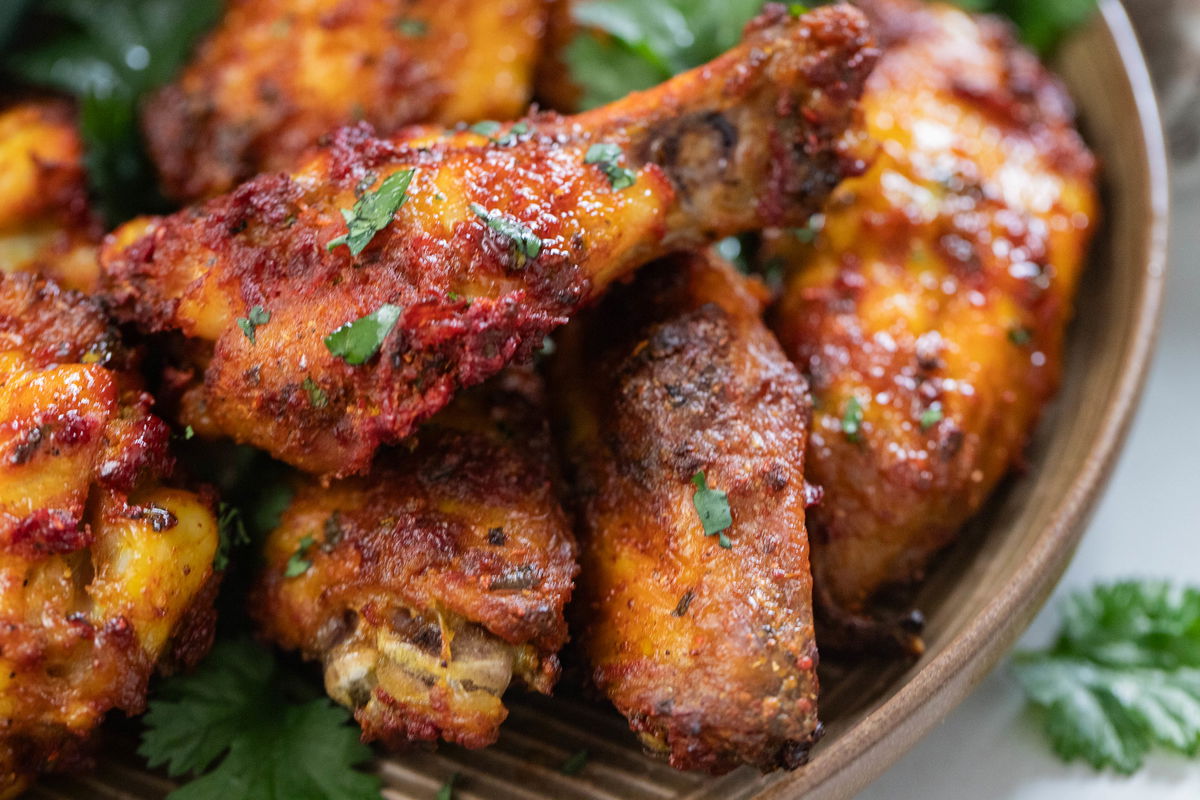
These are typically breaded and deep-fried. Boneless chicken wings save you the trouble of having to eat around and clean up after chicken bones. However, since they come from the breast, the meat is naturally drier and less flavorful since they come from the breast.
How many Chicken Wings should you serve?
How many wings to serve your guests depends on how hungry you expect them to be, how long you expect them to eat, and whether you are serving them many other foods alongside the wings.
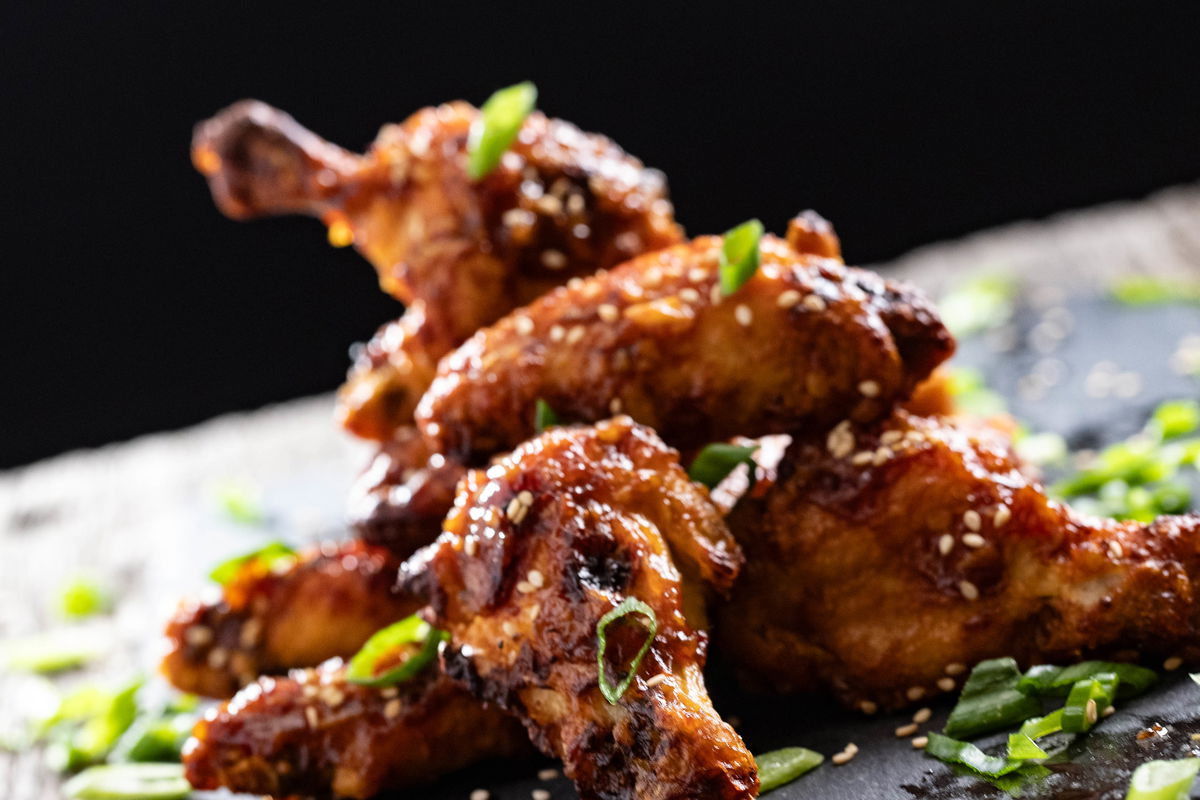
If I were serving someone a plate of wings, call it a meal and be done with them afterword, I would suggest about a pound of chicken wings per person. That is typically 8 to 12 pieces. Keep in mind, much of the weight of 1 pound of chicken wings is bone.
If this person were sticking around to watch a 3-hour football game, they might start to get their appetite back as the second-hour approaches, so I would suggest 1 1/2 to 2 pounds per person.
However, if you offer a large food spread, 1/2 pound per person should suffice.
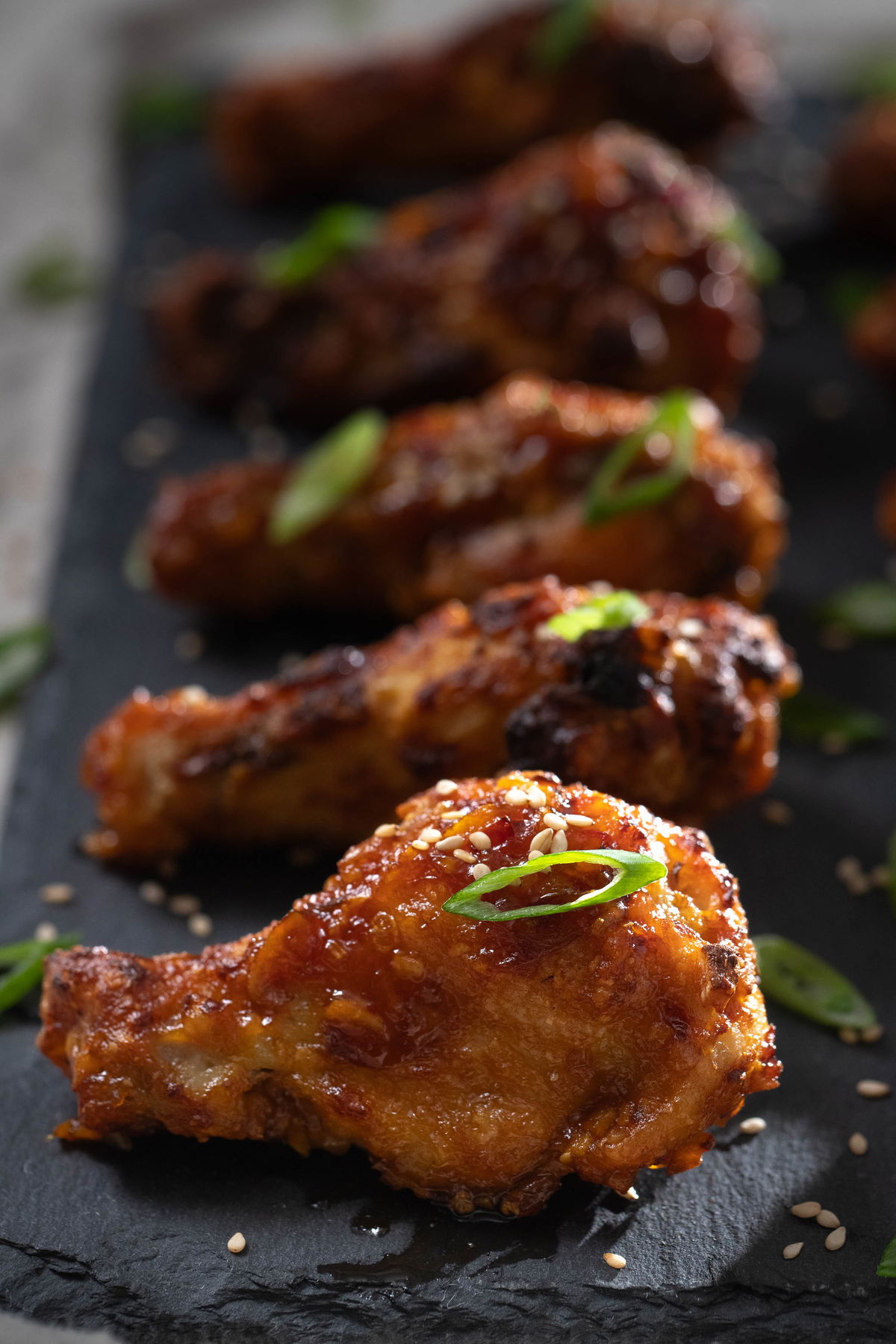
A Note on Food Safety
Since party wings are often served buffet style alongside other appetizers or snacks, it’s important to keep basic food safety guidelines in mind. Do not allow wings to sit out for more than two hours or one hour if it is hot where they are being kept (90°F or warmer). If you want to make them available to your guests over a long period. Cooked wings can be refrigerated and reheated if you make too many.
How do you know when Wings are Done?
Chicken should always be cooked to an internal temperature of 165°F. You can stop cooking them at 160°F as they will continue to rise in temperature when first removed from heat.
You can use a meat thermometer to check the temperature of your wings, but this is not a perfect approach. That is because it is very difficult to get an accurate temperature reading with chicken wings. The bones will typically heat up more than the meat and their radiant heat will cause the thermometer to read higher. Be sure to use these other indicators in addition to the thermometer:
- Visual Doneness: check the thickest part of a few wings. Ensure that the meat is white all the way through. There should be no pinkness near the bone.
- Texture: the meat should be firm. If it has a jelly-like texture, it needs to be cooked more.
- Juices run clear: wings don’t have a lot of juice, but if you pierce the wings and notice pink or red juice running out, they are not fully cooked yet.
- Time and Temperature: because of the small size and high surface area of chicken wings, you can rely on cooking time to judge doneness more than you can with larger pieces of meat.
Methods of Cooking

Which cooking method you choose will depend on how you want to run your party. Do you want all of your wings out and ready to go when your guests arrive? Or do you want to trickle out batch after batch throughout the game so they are always hot and fresh? And, of course, how many wings are you putting together overall?
Here is a breakdown of the different methods, along with their potential advantages and disadvantages:
- Air Fryer: The air fryer has recently become one of my favorite cooking methods. It’s simple and does a great job by providing a lot of dry heat. It just might be the perfect method for cooking most chicken wings. The one major disadvantage of the air fryer, depending on what model you have, is its compact size. My air fryer sits on my countertop and can cook just 1 pound of wings at a time. If you don’t mind cooking lots of small batches throughout the game, this can be perfect because the wings will always be hot and fresh.
- Deep Fried: the snack that started it all, “Buffalo Wings” are traditionally breaded and deep fried.
- Baked: Baking wings in the oven is an excellent solution if you want to cook a lot of wings at once. Most people are already quite comfortable with simple baking. You can lay them out on the baking sheet. Just be careful not to crowd the sheet. It will take more time than the air fryer, but it is a relatively easy, straightforward option. It can be more challenging to get that nice, crispy texture.
- Broil: Broiling isn’t much different than baking. It is a very high-temperature bake that simulates grilling. To get the most out of broiling, you should know how it works with your specific model of oven. Keep in mind, broiling is a dry method of cooking. You want to be sure any liquids that seep from the chicken has a place to go, away from the meat, to allow the meat to be dry. A broiling pan, or a simple baking sheet with cooling rack on top setup works nicely.
- Pan-Fried: Another approach to making chicken wings is to pan-fry them. Chicken wings do well in a pan because they are small, and the high heat is able to penetrate the meat and cook them all the way through. Pan frying can be a good method for cooking up to 2 pounds of chicken at a time.
- Confit: Confit is a classic French technique of slowly cooking chicken in its own fat. When it comes to chicken wings, this can be a way of working in a little gourmet flair. If you are making wings, you probably won’t be able to “cook the chicken in its own fat,” but you can use another fat to do this. Olive oil is a very popular alternative, or try my version, which uses ghee.
Cook Times
Although your specific ingredient might alter the cook times a little bit, here is a chart of cooking methods, temperature and cook times that will work for most recipes:
| Method | Temperature | Cook Time |
|---|---|---|
| Air Fry | 380°F (200°C) | 16-20 minutes |
| Bake | 400°F (200°C) | 40-50 minutes |
| Broil | about 550°F (285°C) | 20 minutes |
| Deep Fry | 350°F (175°C) | 8-12 minutes |
| Pan Fry (Shallow Fry) | 350°F (175°C) | 15-20 minutes |
What to Serve with Chicken Wings
Dipping Sauces
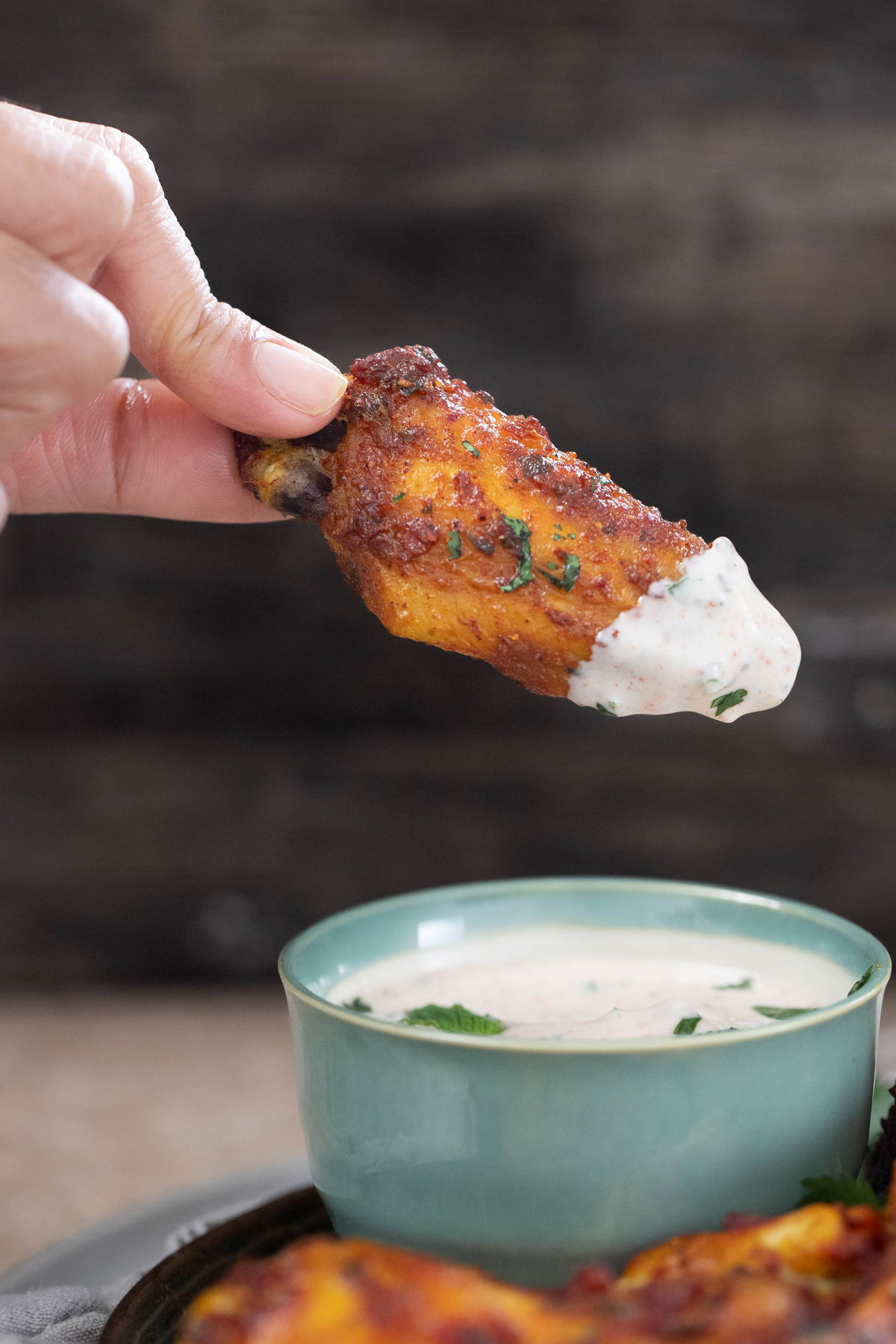
There is almost no end to the number and types of dipping sauces you can serve with wings. The classic buffalo wings are typically served with blue cheese and sometimes extra Frank’s for those who can’t get enough. Here is a list of suggestions:
- Yogurt Cilantro Dipping Sauce – This is a classic Indian yogurt sauce that can easily unseat ranch dressing as a dipping sauce at your wings buffet.
- Tamarind Chutney – this is an out-of-the-box choice of dipping sauce, perfect if you are serving tamarind chicken wings. Tamarind chutney is a sweet and sour Indian chutney more typically used for snacks like bhel or bhajiya, but the dip can be so good with chicken wings.
- Chicken Tikka Dipping Sauce
- Barbeque sauce – for a sweet and smoky wing.
- Ranch Dressing – ranch dressing was invented by Steve Henson in the 1950s at a ranch called “Hidden Valley.” It is made with mayonnaise, buttermilk, herbs such as dill, chives, and parsley, garlic, onions, salt, pepper and vinegar or lemon juice.
- Blue Cheese – for classic Buffalo wings, is there any better dipping sauce than classic blue cheese dressing? I love to provide a simple dip heightened with chunks of gorgonzola cheese.
- Frank’s RedHot Sauce – created by Jacob Frank at the R.T. French Company (think “French’s mustard”). This sauce became associated with Buffalo wings in 1964 when they were invented in Buffalo, NY by Teressa Bellissimo.
- Teriyaki sauce – a sweet and savory soy sauce based sauce, great for dipping wings that are prepared with Asian flavors.
- Garlic Parmesan sauce
- Sriracha – a hot pepper sauce with a unique flavor profile that comes from a combination of fermented chilies, vinegar, and garlic.
- Hoisin – another classic Asian sauce.
- Spicy honey – a popular sauce for fried chicken. It makes a delightfully sweet and spicy sauce.
- Chimichurri – made with parsley, garlic, and olive oil, complements any meat without overwhelming it with spice.
- Tzatziki – a Greek sauce similar to raita or an Indian yogurt cilantro dipping sauce. It has the same cooling effect to counterbalance spicy wings.
- Curry mayonnaise – mayonnaise has been a popular condiment in India lately. This sauce combines the creaminess of mayonnaise with Indian flavors.
- Gochujang Sauce – this Korean hot sauce has become a favorite of mine. It gets its distinctive “Korean flavor” from fermented gochujang chilies, meju (soybean powder), and yeotgireum (barley malt powder).
Snacks that Go Well With Chicken Wings
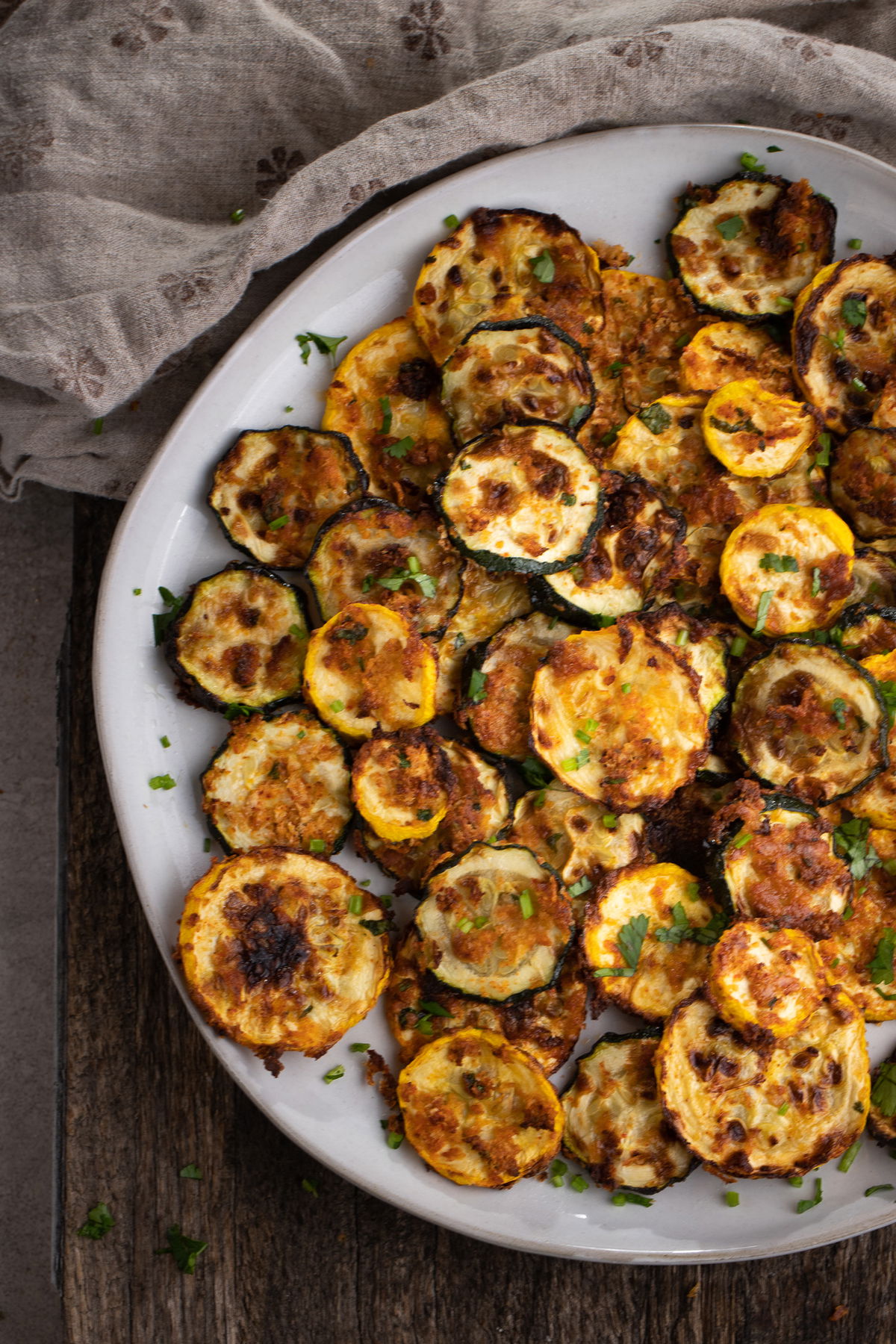
- Air fryer zucchini and squash bites
- Carrots and Celery: this is a traditional accompaniment to buffalo wings (especially celery). As a sometimes vegetarian, these are a favorite snack served with buffalo sauce and blue cheese dressing.
- Buffalo chickpea dip
- India provides no end to fried snacks that would be at home on a Game Night spread:
- Chicken tikka bites – these are prepared like a type of popcorn chicken but do not need the breading.
- Cut Mirchi
- Paneer Pakora
- Tuvar ni Kachori
- Methi na Gota
Chicken Wings Recipes
-
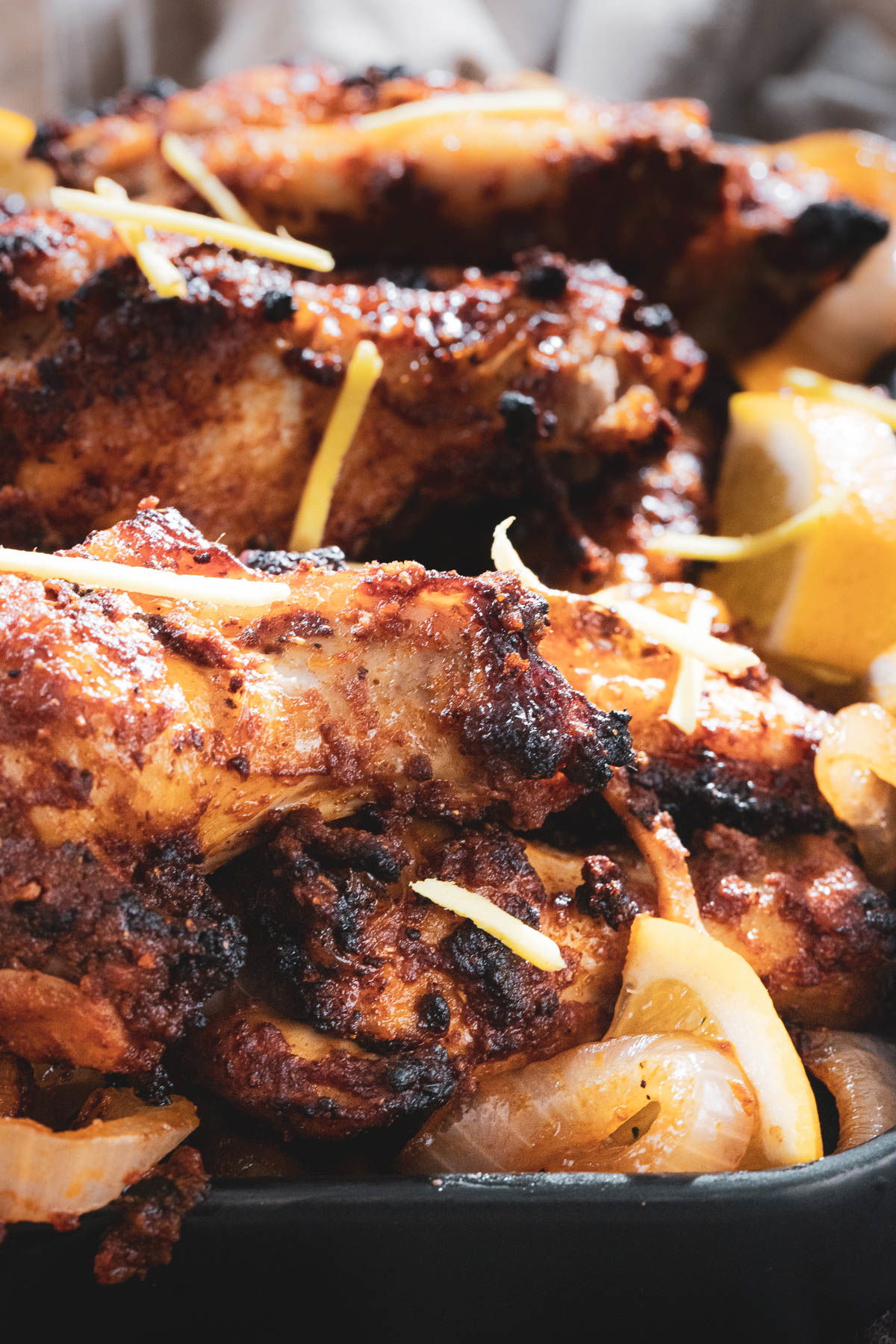
Broiled Curry Chicken Wings | Garam Masala Wings
-
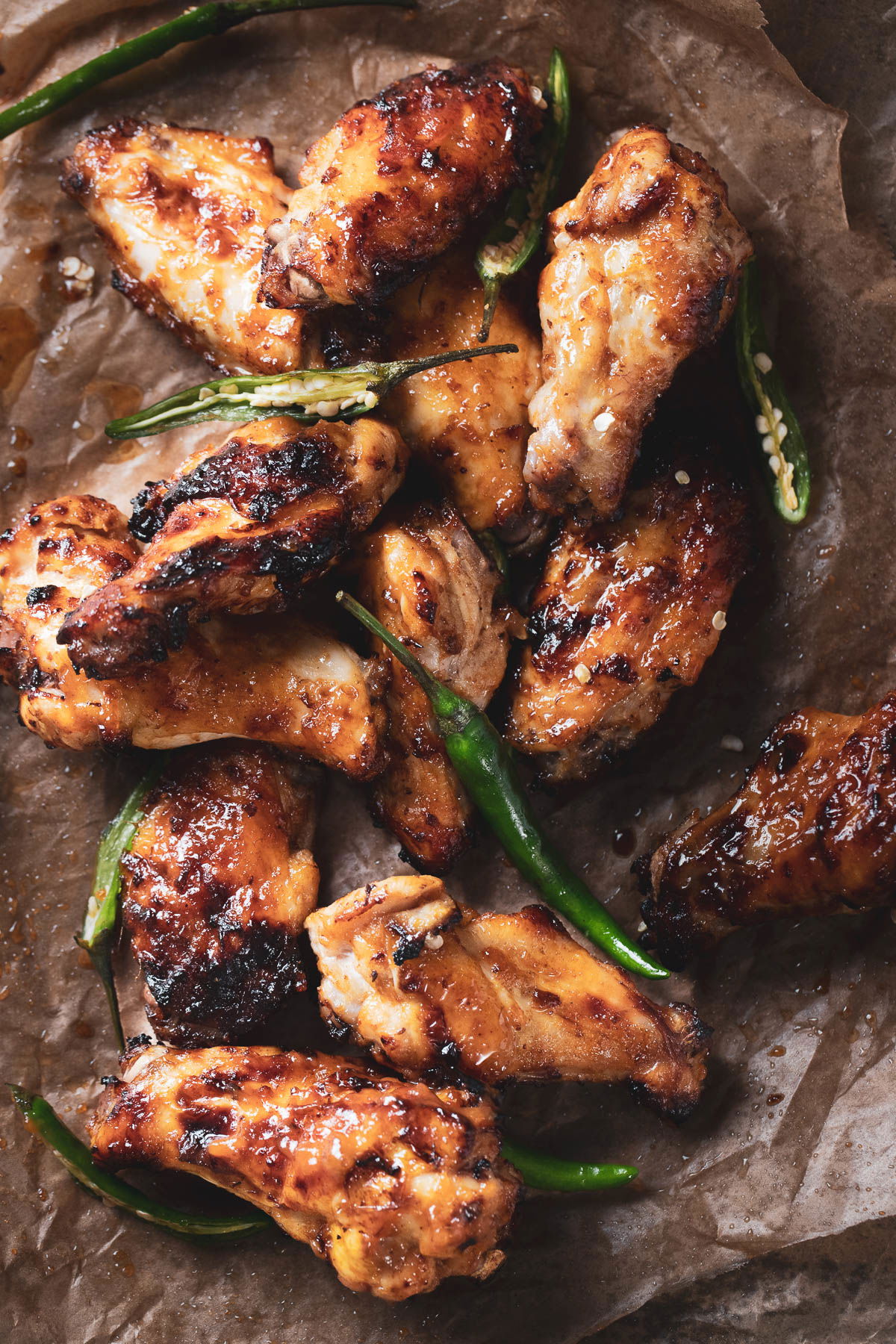
2 Ingredient Spicy Mango Chicken Wings in the Air Fryer
-
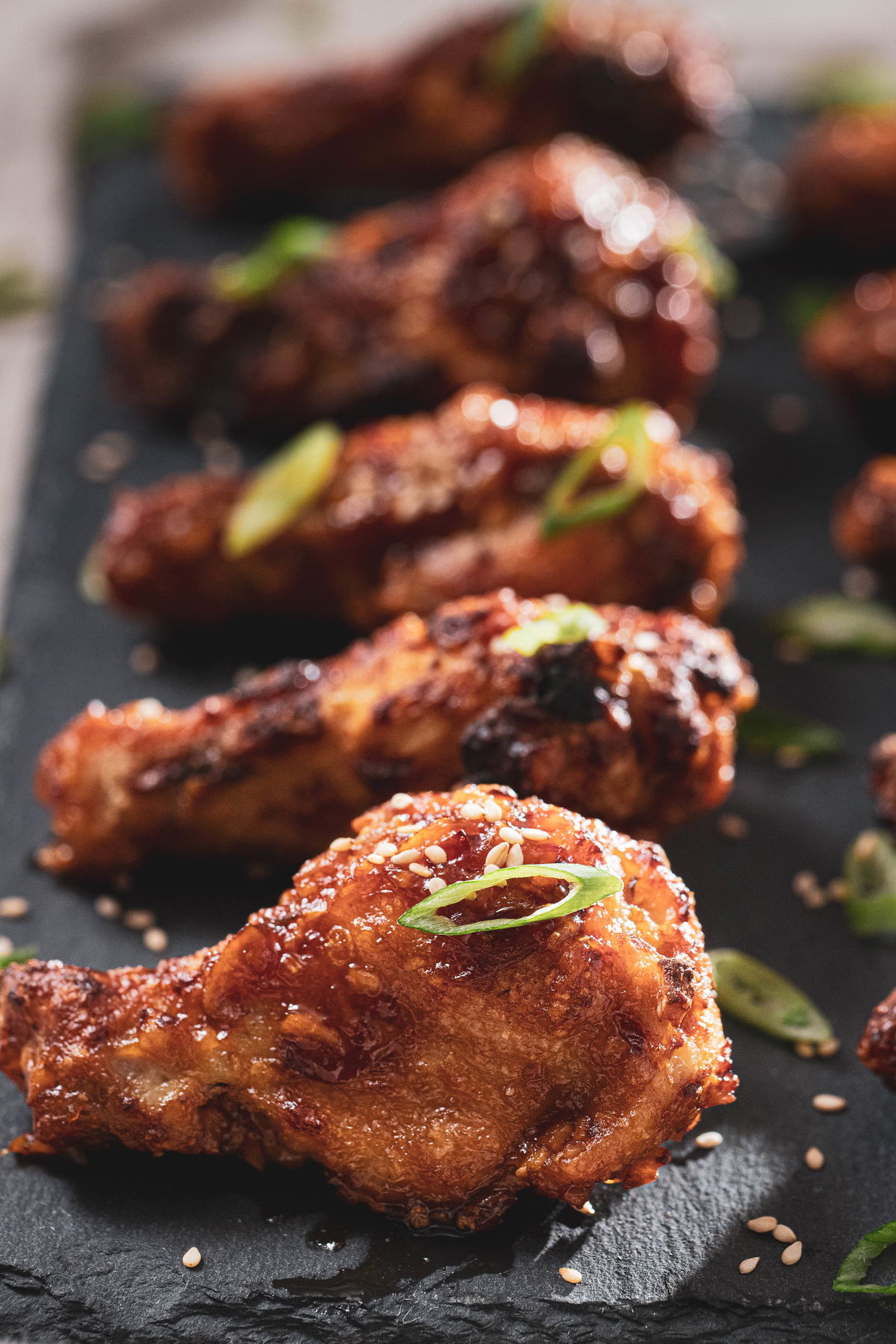
Soy Garlic Chicken Wings (Air Fryer Recipe)
-

Smothered Butter Chicken Wings
-
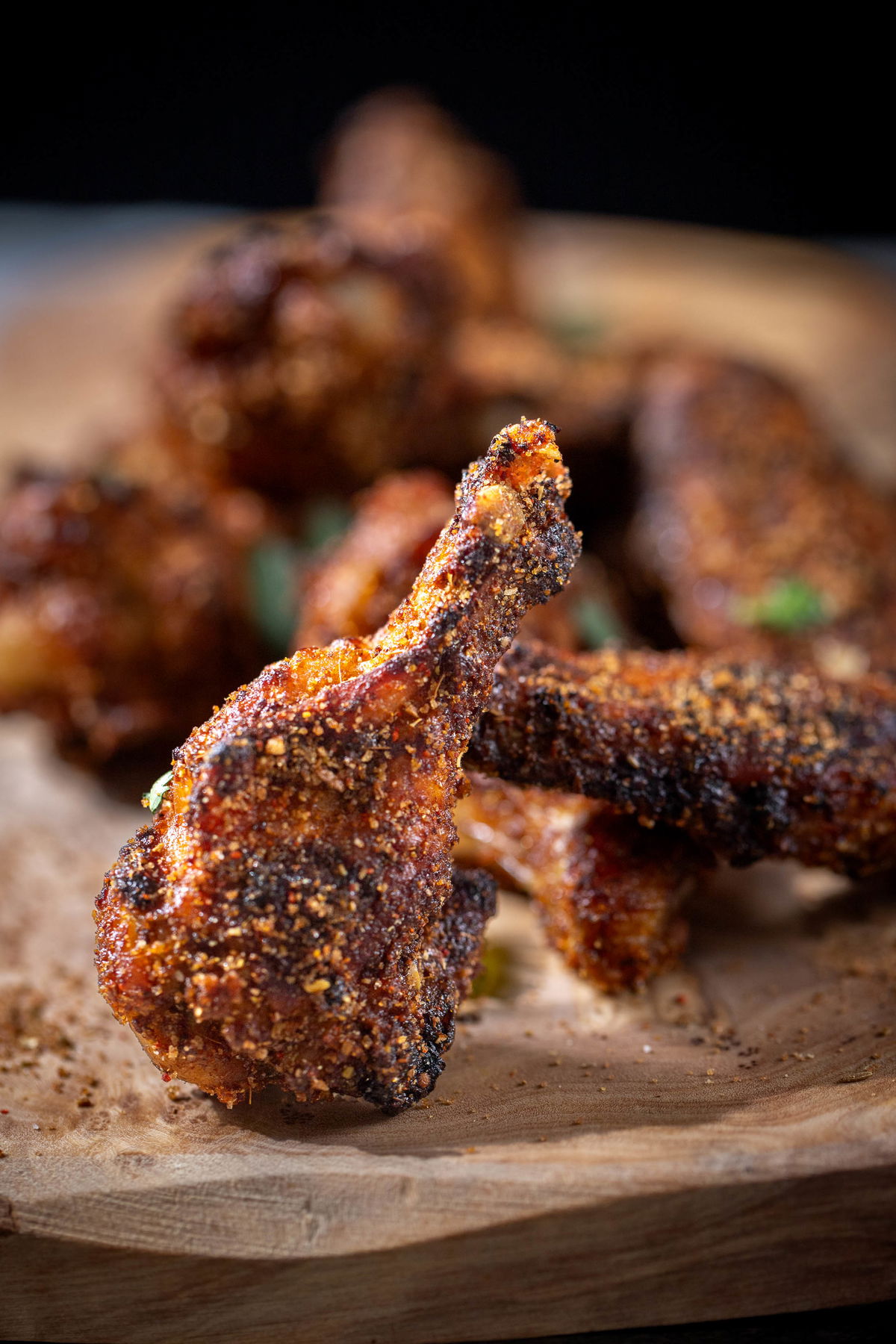
Spicy Dry Rub Chicken Wings in the Air Fryer
-
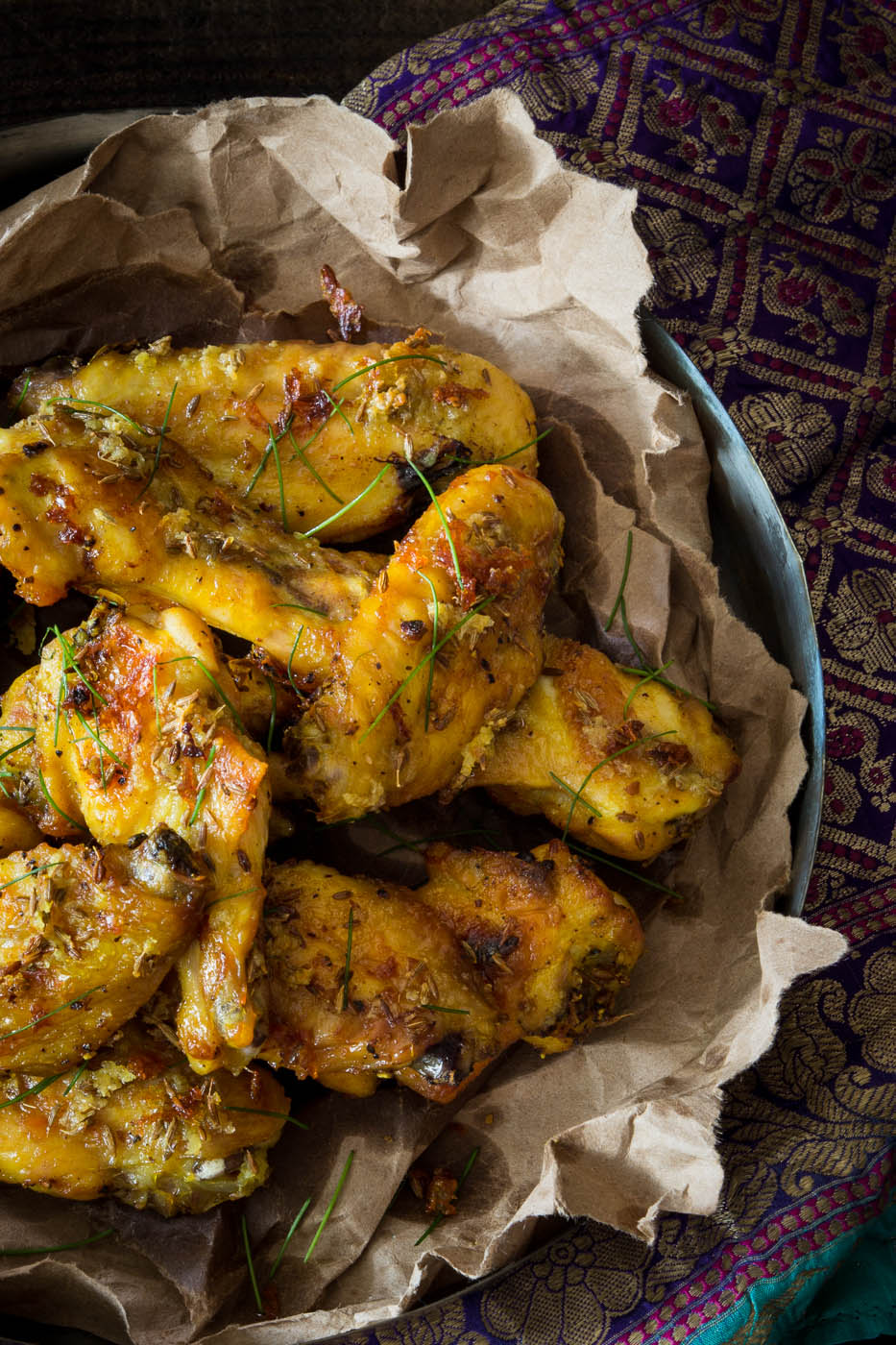
Jeera Chicken Wings (Cumin Chicken Wings)
-

Baked Tandoori Chicken Wings with Cumin Yogurt Dip